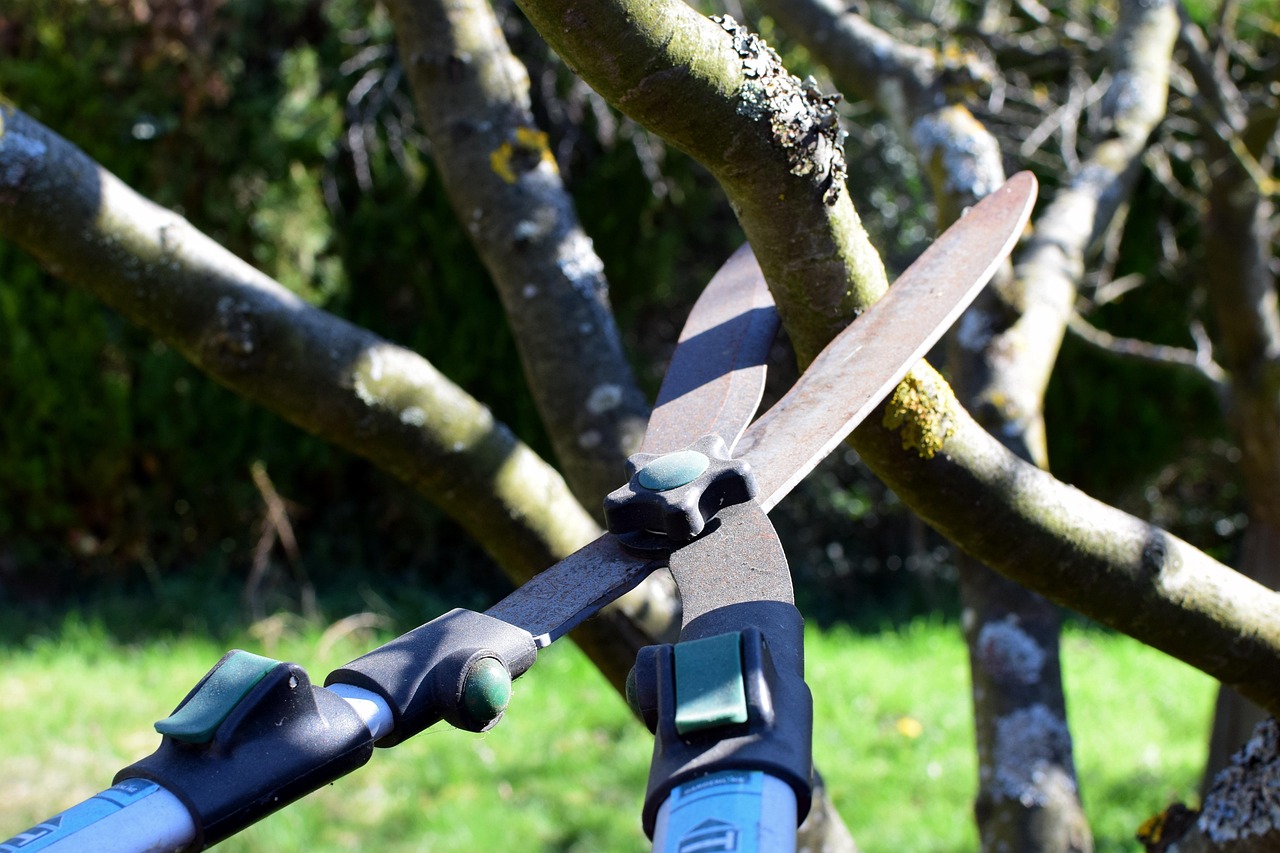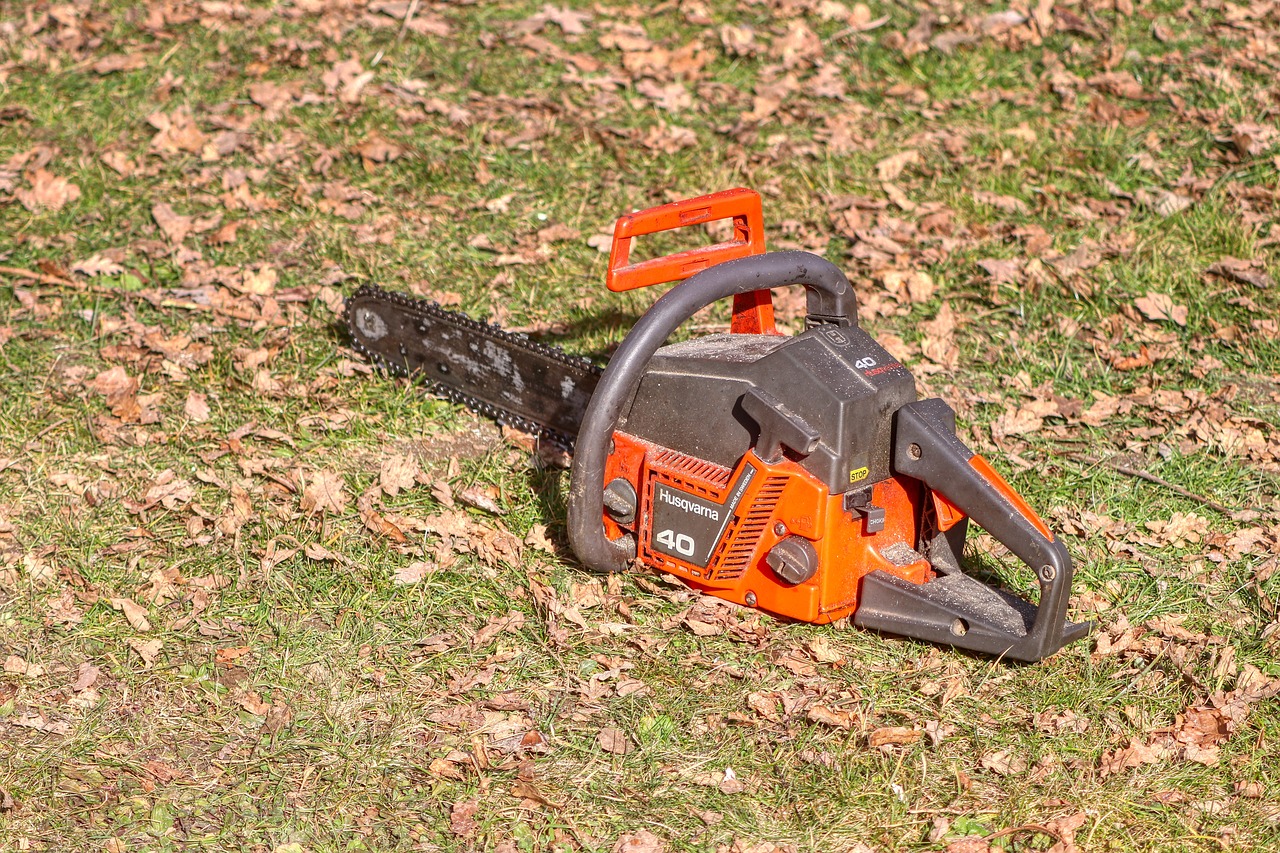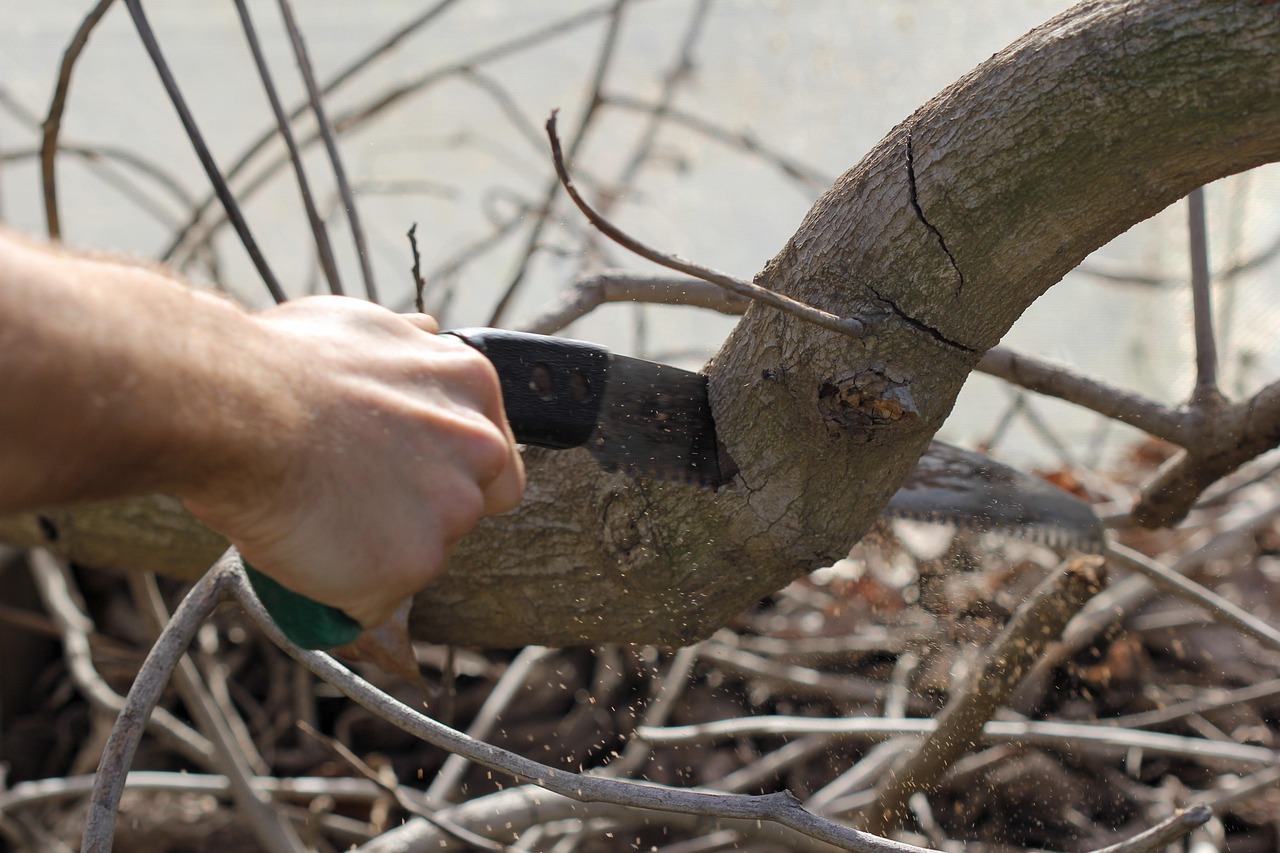Tall tree pruning tools are essential for maintaining the health and aesthetics of trees in hard-to-reach areas. These specialized tools help ensure safety and efficiency when trimming branches high above the ground.
Pruning trees is a vital task for both professional arborists and homeowners. Regular pruning promotes healthy growth, enhances the tree’s shape, and prevents potential hazards caused by dead or overgrown branches. However, accessing tall trees can be challenging and may require specific tools designed to reach high branches safely. Understanding the various tools available will help you make informed decisions when undertaking tree maintenance.

When selecting pruning tools for tall trees, consider factors such as the height of the tree, the thickness of the branches, and your comfort level with using ladders or climbing gear. The right tools not only make the job easier but also ensure that you can perform the task safely. Below are some of the most common tools used for pruning tall trees.
Common Tools for Pruning Tall Trees
There are several types of pruning tools specifically designed for high branches. Each tool has unique features that cater to different pruning needs. Here are some of the most popular options:
- Telescoping Pruners: These tools have extendable handles that allow users to reach higher branches without needing a ladder. They often come with sharp blades that can cut through thick branches.
- Pole Saws: A pole saw is a saw attached to a long pole, enabling users to cut branches from the ground. Some models are powered, while others are manual.
- Tree Climbing Gear: For those willing to scale trees, climbing gear includes harnesses, ropes, and carabiners. This equipment provides safety and mobility when working at heights.
- Chainsaws: For larger branches, a chainsaw may be necessary. Battery-operated or gas-powered models provide convenience and power for tougher jobs.
- Hand Pruners: While they may not reach tall branches directly, hand pruners can be effective for trimming smaller branches after accessing them with other tools.
Each tool serves a specific purpose and may be used in combination with others to achieve optimal results. Understanding how to use these tools safely is essential to prevent accidents or injuries while working at heights.

Safety Considerations
Safety is paramount when pruning tall trees. Before starting any project, take the time to assess the area around the tree and ensure you have the proper safety gear. Here are some important safety tips:
- Always wear protective gear, such as gloves, safety goggles, and a hard hat.
- Inspect your equipment before use. Check for any damage or wear that could compromise safety.
- Use ladders and climbing gear properly. Ensure ladders are stable and positioned on level ground.
- Be aware of your surroundings. Look out for power lines or nearby structures that could pose risks while working.
- Consider enlisting a buddy to help if you are tackling large trees or using heavy equipment.
In addition to personal safety, consider the health of the tree. Over-pruning can harm your tree, so it’s vital to know how much to trim. Research proper techniques for pruning specific types of trees to promote healthy growth.
Choosing the Right Tools
Selecting the right tools involves understanding your specific needs and the characteristics of the tree you are working on. Factors such as branch thickness, height, and your physical capabilities should guide your choices. For example, if you are dealing with very high branches, a pole saw or telescoping pruner may be ideal. On the other hand, if you need to make precise cuts on smaller branches, hand pruners may suffice.

Here is a simple comparison of some popular pruning tools based on their features:
| Tool Type | Reach | Best For | Weight |
|---|---|---|---|
| Telescoping Pruners | Up to 15 feet | Thin branches | Lightweight |
| Pole Saw | Up to 20 feet | Medium to thick branches | Moderate weight |
| Tree Climbing Gear | N/A | Accessing high areas | Variable |
| Chainsaw | N/A | Thick branches | Heavy |
| Hand Pruners | N/A | Small branches | Very lightweight |
Selecting appropriate tools tailored to your specific needs will not only enhance your efficiency but also contribute to safe and effective tree care. Understanding these tools will prepare you for tackling any pruning task with confidence.
The next section will delve deeper into advanced techniques and methods for using these tools effectively in hard-to-reach areas.

Advanced Techniques for Pruning Tall Trees
Pruning tall trees effectively requires not only the right tools but also the application of advanced techniques. Learning how to use these tools properly can make a significant difference in the outcome of your work. Here are some techniques that can help you achieve the best results while ensuring safety and efficiency.
Understanding Tree Anatomy
Before diving into pruning, it’s essential to understand the anatomy of a tree. Knowing where to cut can promote healthy growth and prevent damage. Here are some key components of tree anatomy:
- Branches: The limbs that extend from the trunk. These can be categorized as primary, secondary, and tertiary branches.
- Leaves: The foliage that captures sunlight for photosynthesis. Pruning should avoid excessive removal of leaves.
- Nodes: The points on a branch where leaves or buds emerge. Cutting just above a node encourages new growth.
- Bark: The protective outer layer of the tree. Avoid damaging the bark while pruning, as it is crucial for the tree’s health.
Understanding these components will guide you in making informed cuts that benefit the tree.
Pruning Techniques
Employing the right pruning techniques is vital for maintaining tree health. Here are some effective methods:
- Thinning: This involves selectively removing branches to improve air circulation and light penetration. It helps reduce weight on heavy branches and minimizes the risk of breakage.
- Heading Cuts: This technique shortens a branch by cutting it back to a lateral branch or bud. It encourages bushier growth and can help shape the tree.
- Reduction Cuts: Used to lower the height of a tree without altering its shape drastically, reduction cuts are made to side branches, ensuring that the cut is made above a healthy bud or branch.
- Crown Raising: This technique removes lower branches to elevate the tree’s crown. It enhances visibility and reduces interference with structures or pedestrians below.
- Crown Reduction: Used primarily on overgrown trees, this method decreases the overall size of the tree while maintaining its natural shape. It should be done cautiously to avoid stressing the tree.
Each technique serves a different purpose and can be applied depending on the specific needs of your tree.
Using Tools Effectively
The effectiveness of your pruning depends largely on how well you wield your tools. Here are tips for using some of the most common tools effectively:
- Telescoping Pruners: Extend them fully before use to reach higher branches. Use smooth, controlled motions to avoid damaging nearby branches.
- Pole Saw: Ensure it is securely attached and well-balanced when cutting. Use slow, steady strokes to maintain control and accuracy.
- Chainsaw: Always follow safety guidelines, including wearing protective gear. Use both hands for better control and always cut from above rather than below to prevent kickback.
- Hand Pruners: Keep them sharp for clean cuts. Make cuts at a 45-degree angle to promote healing and prevent water retention on cut surfaces.
Maintaining Safety While Pruning
Safety should always be a priority when working at heights. Adhering to proper safety protocols protects you from accidents and ensures that the job is done correctly. Here are essential safety tips:
- Plan Your Work: Assess the tree and surrounding area before starting. Identify potential hazards such as power lines, uneven ground, or falling debris.
- Wear Appropriate Gear: Use helmets, goggles, gloves, and sturdy boots to protect yourself from injuries.
- Work with a Partner: Having someone assist you can provide extra safety and support, especially when using heavy equipment.
- Use Ladders Safely: If using ladders, ensure they are stable and positioned correctly. Never overreach while on a ladder; reposition it as needed.
- Avoid Bad Weather: Do not prune during windy or rainy conditions as this increases risks of slips and falls.
By following these safety measures, you can minimize risks while maximizing your efficiency when pruning tall trees.
Special Considerations for Different Tree Species
Diverse tree species have unique requirements when it comes to pruning. Understanding these differences can improve your results significantly. Here are some general considerations for popular types of trees:
| Tree Species | Best Time to Prune | Specific Needs | Common Problems |
|---|---|---|---|
| Maple | Late winter to early spring | Avoid heavy pruning; focus on dead limbs | Sap bleeding if pruned too early |
| Pine | Late spring to early summer | Prune new growth; avoid cutting old branches | Pine beetle infestation from overgrowth |
| Fruit Trees | Winter dormancy period | Shape for sunlight exposure; remove dead wood | Disease from excessive moisture in cuts |
| Oak | Late summer to early fall | Avoid pruning in spring; focus on shaping | Oak wilt disease if pruned in spring |
| Cedar | Late winter or early spring | Avoid removing too much foliage at once | Cedar rust or blight from excessive moisture |
Being aware of these factors will help you tailor your approach based on the specific type of tree you are working with, leading to healthier trees and more successful pruning outcomes.
The next section will explore maintenance practices for your pruning tools and additional resources for extending your knowledge on tree care.
Maintaining Your Pruning Tools
Proper maintenance of pruning tools is essential for ensuring their longevity and effectiveness. Well-maintained tools not only perform better but also contribute to healthier cuts and reduce the risk of disease transmission between plants. Here are some key practices to keep your pruning tools in optimal condition.
Cleaning Your Tools
Regular cleaning is crucial to prevent the buildup of sap, dirt, and debris, which can impair functionality. Here are steps to follow when cleaning your tools:
- Remove Debris: After each use, wipe down the blades with a clean cloth to remove any sap or dirt.
- Soak in Soapy Water: For tougher residues, soak the tools in warm, soapy water for a few minutes. Use a soft brush to scrub areas with stubborn buildup.
- Rinse and Dry: Rinse thoroughly with clean water and dry completely to prevent rust.
- Disinfect: To avoid spreading diseases among plants, disinfect your tools using a solution of one part bleach to nine parts water or rubbing alcohol.
Following these steps will help maintain the cleanliness and performance of your pruning tools.
Sharpening Blades
Sharp blades are essential for making clean cuts, which heal quickly and reduce the risk of disease. Here’s how to sharpen your pruning tools effectively:
- Use a Sharpening Stone: Hold the blade at a 20-degree angle against a sharpening stone and draw the blade towards you. Repeat this motion until you achieve a sharp edge.
- Use a File: A metal file can also be effective for sharpening. Similar to the stone method, maintain a consistent angle while filing.
- Check for Burrs: After sharpening, check for any burrs on the blade’s edge. Remove them gently with a fine file.
- Test the Sharpness: A sharp blade should easily slice through paper or small branches. If it struggles, repeat the sharpening process.
Lubricating Moving Parts
To ensure smooth operation, lubricate any moving parts of your pruning tools regularly. Follow these steps:
- Identify Moving Parts: Check for any hinges or pivot points that require lubrication.
- Select Appropriate Lubricant: Use a light machine oil or silicone spray for lubrication. Avoid heavy oils that can attract dirt.
- Apply Sparingly: Apply a small amount of lubricant to the moving parts and wipe off any excess to prevent attracting dirt.
Lubricating your tools helps them operate smoothly and reduces wear and tear.
Storing Your Pruning Tools
The way you store your pruning tools can significantly impact their longevity. Proper storage techniques protect them from damage and corrosion. Consider these guidelines:
- Dry Storage Area: Store tools in a dry location away from moisture to prevent rusting.
- Tool Rack or Drawer: Keep tools organized on a rack or in a drawer to prevent blades from getting dull or damaged.
- Protective Covers: Use sheaths or covers for sharp blades to prevent accidental cuts and protect the edges.
- Avoid Damp Areas: Do not store tools in basements or sheds that are prone to dampness unless they are well-ventilated.
Additional Resources for Tree Care
Expanding your knowledge about tree care can enhance your pruning skills and improve overall tree health. Here are some valuable resources you may find helpful:
Books
- The Pruning Book by Lee Reich: This comprehensive guide covers various pruning techniques and tree care practices.
- The Tree Care Primer by Dr. John D. McLain: Focuses on tree biology and maintenance, providing insights into proper care methods.
Online Courses and Tutorials
- Arboriculture Online Classes: Many universities offer online courses focused on tree care and maintenance.
- YouTube Tutorials: Various channels provide practical demonstrations on pruning techniques and tool maintenance. Look for reputable arborists sharing their expertise.
Local Workshops and Community Classes
Consider attending local workshops hosted by gardening centers or community colleges. These hands-on classes often cover effective pruning techniques and tree care.
Conclusion of Best Practices
Caring for tall trees in hard-to-reach areas requires a combination of proper tools, techniques, safety measures, and ongoing education. By maintaining your tools, understanding tree anatomy, and employing advanced pruning methods, you can enhance your tree care efforts significantly.
The next section will discuss specific challenges encountered while pruning tall trees and ways to overcome them effectively.
Challenges in Pruning Tall Trees
Pruning tall trees in hard-to-reach areas presents unique challenges that require careful consideration and planning. Some of the common difficulties encountered include:
Height and Accessibility
Accessing high branches can be daunting, especially for individuals who may not have experience working at heights. Here are some strategies to overcome this challenge:
- Use of Ladders: While ladders can provide access, they must be used carefully. Ensure that the ladder is stable and never lean too far to one side.
- Telehandlers or Lifts: For extensive pruning jobs, consider renting a lift to safely reach high branches without the risks associated with ladders.
- Climbing Techniques: If you are trained in tree climbing, using ropes and harnesses can offer greater flexibility and access to difficult areas.
Branch Thickness and Density
Some trees may have thick or densely packed branches, making it difficult to identify which ones need pruning. To manage this, consider the following:
- Prioritize Dead or Diseased Branches: Always start by removing dead, damaged, or diseased branches, as these can pose safety hazards and affect tree health.
- Create a Pruning Plan: Before starting, walk around the tree to assess which branches need attention. Having a clear plan can make the process smoother.
- Use the Right Tools: Ensure you have appropriate tools for the thickness of the branches you are dealing with. For example, pole saws are ideal for thicker branches.
Weather Conditions
Adverse weather conditions can complicate pruning tasks. Here are tips for managing this issue:
- Avoid Wet Conditions: Pruning during rain can make surfaces slippery and increase the risk of accidents. Choose a dry day for your work.
- Watch for Wind: High winds can cause branches to sway unpredictably, posing risks. Avoid pruning on windy days to ensure safety.
- Temperature Considerations: Extreme temperatures can affect tool performance and increase fatigue. Dress appropriately and take breaks as needed.
Tree Health and Recovery
Understanding how trees respond to pruning is essential for promoting their health. Here are strategies to minimize stress on the tree:
- Time Your Cuts Wisely: Prune during the appropriate season for each tree species to encourage quicker healing.
- Avoid Over-Pruning: Removing too much foliage can harm the tree. Follow the rule of thumb: no more than 25% of the tree’s canopy should be removed at a time.
- Monitor for Pests and Diseases: After pruning, keep an eye on the tree for any signs of pests or diseases that might take advantage of stress injuries.
Final Thoughts
Caring for tall trees in hard-to-reach areas requires a comprehensive approach that emphasizes safety, knowledge, and effective techniques. By understanding the tools available and the best practices for pruning, you can maintain the health and beauty of your trees while ensuring your own safety.
The key takeaways from this article include:
- Investing in proper tools specifically designed for tall tree pruning is essential for efficiency and safety.
- Regular maintenance of your pruning tools enhances their performance and longevity.
- Understanding tree anatomy and species-specific pruning needs leads to better outcomes for tree health.
- Being aware of potential challenges such as height, accessibility, weather conditions, and tree health allows for more effective planning and execution of pruning tasks.
By applying these principles and techniques, you will not only improve your pruning skills but also contribute positively to the environment by fostering healthy trees. With continued education and practice, you can become proficient in managing tall trees in various landscapes.
Whether you are an experienced arborist or a homeowner looking to enhance your garden, embracing these practices will lead to successful and rewarding tree care experiences.
As you embark on your pruning journey, remember that patience and practice are key to mastering the art of tree care. Happy pruning!
